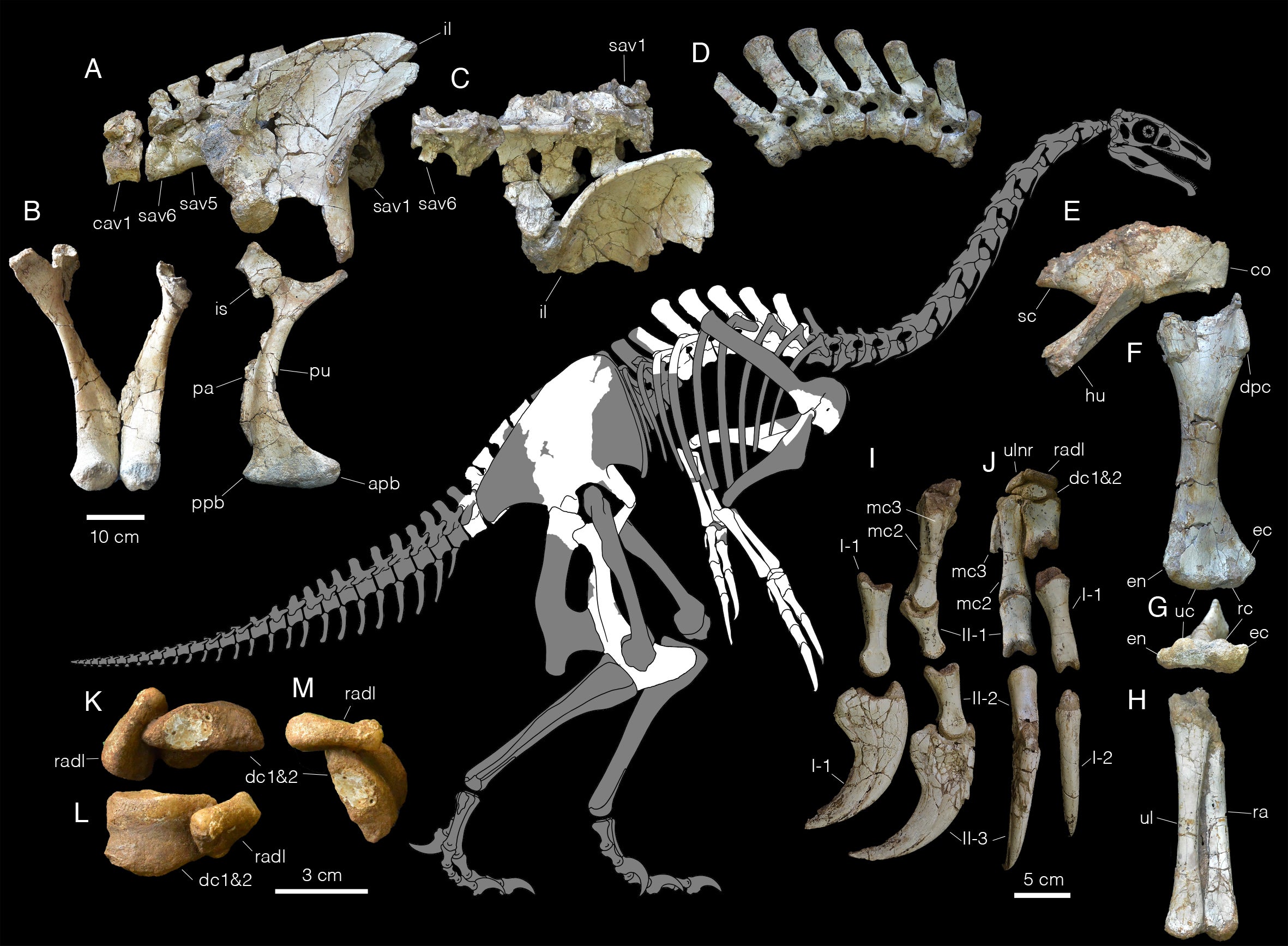A new dinosaur species has been discovered in Mongolia’s Gobi Desert based on two “exquisitely preserved” long fossil claws, an advance that sheds more light on a less understood family of the giant reptiles.
The species, named Duonychus tsogtbaatari, belongs to a group of two-legged dinosaurs called therizinosaurs that lived in central and eastern Asia as well as in western North America during the Cretaceous period around 90 million years ago, researchers say.
This family of dinosaurs are known for their long necks, small leaf-shaped teeth, and large hooked claws on their hands.
They mostly had three-fingered hands with large claw-like toe bones.
Despite their fearsome appearance, scientists say these dinosaurs were largely herbivorous or omnivorous.
However, the newly discovered Duonychus had two clawed fingers instead of the typical three, according to the latest study published in the journal iScience.
Its hand orientation was more similar to that of the mighty T rex than its close relatives, researchers say.
"The hands, a hallmark of therizinosaurs, are exquisitely preserved with all the finger and wrist bones intact in this specimen," paleontologist Darla Zelenitsky from the University of Calgary told Live Science.
During recent excavations, scientists uncovered the dinosaur’s hand and well-preserved claw sheaths made out of the protein keratin, which makes up animal feathers, hair, and hooves.
“Here, we describe a new and unusual species of the therizinosaurid Duonychus tsogtbaatari, recovered from the lower Upper Cretaceous Bayanshiree Formation of the Gobi Desert of Mongolia,” scientists wrote.
“This species is different from other therizinosaurs in that the hand possesses only two fingers, rather than three fingers,” they noted.

Duonychus used its claws in ways similar to other therizinosaurs for grappling and grasping vegetation, according to scientists, including those from the New Mexico Museum of Natural History and Science.
Despite looking fearsome with a 90-degree curve, the claws were adaptations that helped the dinosaur grip and pull branches with a hooking motion similar to claw-use by modern-day chameleons and anteaters, researchers say.
“The strong curvature of this large claw and high ungual flexion indicate that Duonychus was likely amplectorial (grasping) and an effective grasper of vegetation, despite having only two functional fingers,” scientists wrote.
“Despite having only two functional digits, Duonychus was likely an effective grasper, considering the extreme flexion (near 90°) at the ungual joint and the strong curvature of the keratinous claw,” they said.
The latest find sheds more insights into the loss of digits in the evolution of some dinosaur groups documented in previous studies.
It further shows that digit loss evolved independently in several two-legged dinosaur lineages.
The discovery also suggests China’s Gobi Desert could be home to more diverse dinosaur fossils.
This kind of independent evolution of the same trait in multiple lineages highlights the adaptability of these groups of dinosaurs to diverse ecological niches, researchers concluded.
Renewable energy jumps to new high, powered by China solar boom
India accused of interfering in Canada’s Conservative Party leadership race
Unique skeleton of ‘Red Princess’ sheds light on ancient Chinese civilisation
Scientists make huge breakthrough in understanding Parkinson’s cause
Scientists stunned to find sharks making sounds for first time
NASA terminating $420 million in contracts not aligned with its new priorities







